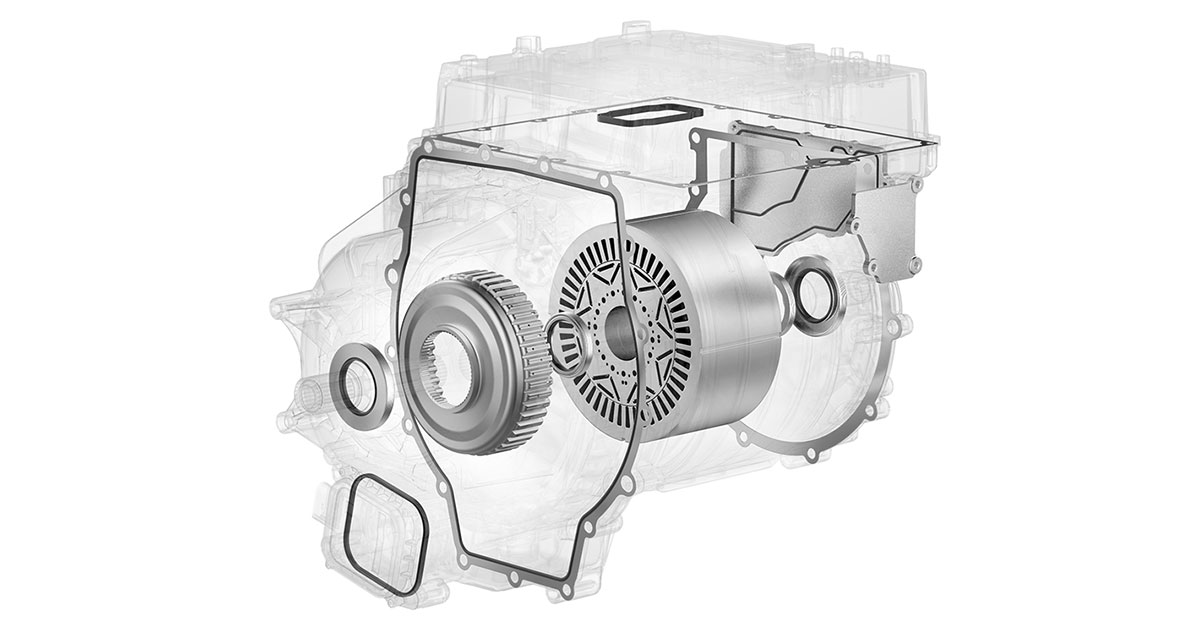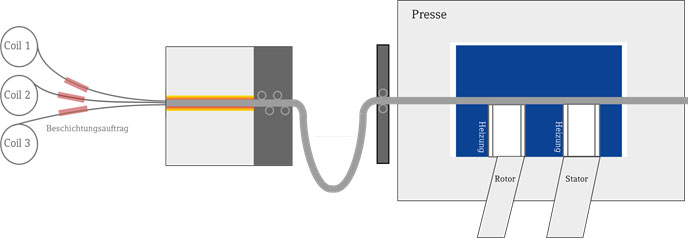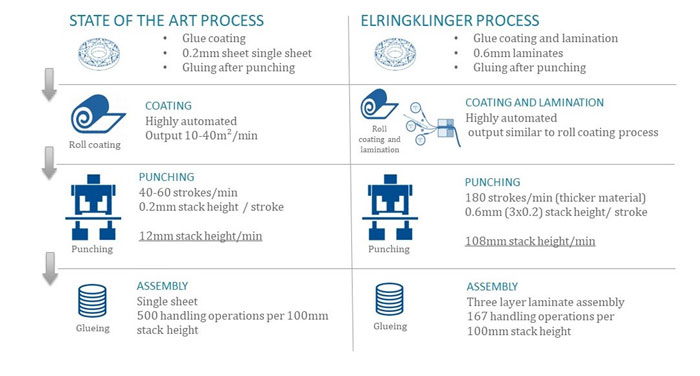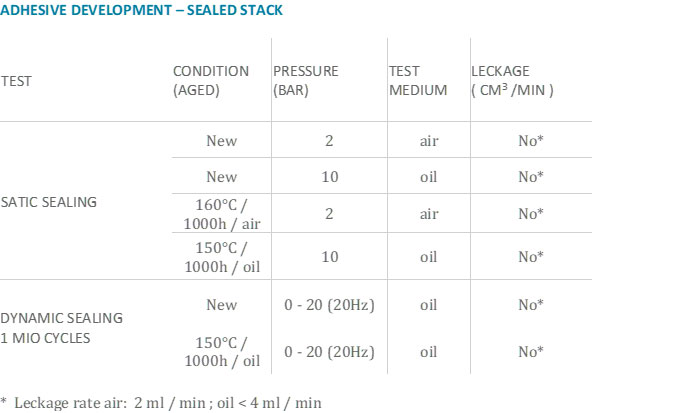
Due to the change from internal combustion engines to electric drives in automotive applications, both the demand as well as the requirements for laminated stacks that form the iron core of an electric traction motor are increasing.
ELECTRIC DRIVE UNIT COMPONENTS
In order to optimize energy consumption and reduce the installation space, the iron losses of laminated stacks for traction motors must be reduced. On the other hand, they must be able to withstand ever higher speeds.
One way to meet this requirement is to stack thin layers of steel with a thickness ≤ 0.2 mm which are bonded together to create a stack. The thinner steel layers reduce eddy-current losses, with the adhesive layer acting as an insulator between the layers. Bonding, in comparison to known processes such as clinching/ interlocking, produces a significantly higher bond strength between the individual layers. This bonding strength is required to prevent the rotor stack from opening up at high speeds.
The main problem when using thin steel strips is a reduced number of strokes in the stamping process due to the reduced feed rate of the steel strip being processed. The increased number of layers and the reduced feed rate lead to an increase in the processing time for the same stack height compared to commercially available steel strip thicknesses. The step from 0.3 mm to 0.2 mm layer thickness results in a reduction in output of more than 80%.
To solve this problem, ElringKlinger developed an improved production process.
ELRINGKLINGER PRODUCTION PROCESS FOR LAMINATED STACKS

As a manufacturer of coated, metal flat gaskets, ElringKlinger has decades of experience in the coating, stamping and bonding of metal sheets with thicknesses ranging from 0.10 mm to 0.30 mm.
Special stamping processes have been developed specifically for the product group of multi-layer metal flat gaskets, which allows for several layers to be stamped simultaneously in one stamping process. This technology has been transferred to the production of bonded stacks.
In the first step, thin steel strips with a thickness of 0.2 mm are fully coated with a thermally activated adhesive. In the next process step, these coated steel strips are bonded to form a three-layer composite. From this composite material, individual three-layer bonded stacksare then stamped, which are collected, aligned and have a final bonding to form a complete rotor/stator stack.
Due to the higher stiffness of the composite material compared to individual sheet steel strips, the feed rate can be increased so that the same number of strokes is achieved as when processing 0.3 mm thick sheet steel strips. In addition, the output quantity is increased compared to single-stroke production – 0.6 mm stacking height can be produced per stroke.
PROCESS COMPARISON – GLUED STACK
Advantages of ElringKlinger laminated stacks
The adhesive developed by ElringKlinger offers not only reduced curing times but also excellent media resistance to oils, hot air and coolants. ElringKlinger has a vast experience using very similar adhesives in the production of gaskets for automatic transmissions, which the company has been producing for many years.
Due to the very good media resistance and mechanical strength of the adhesive bond, the sheet steel stacks are permanently internally sealed during lifetime. The lifetime performance of the sealing has already been confirmed in initial validations trials by media storage and internal pressure tests.


Due to this characteristic, direct liquid cooling can be realized directly inside of the stator or the rotor by means of stamped channels. The reduced eddy-current losses of the thin steel sheets and the improved cooling enables a longer peak power, especially in high load ranges.
Due to the isolating effect of the adhesive layers and without the mechanical connection points, which occurs in the clinching/ interlock process, there is no “short circuit” between the layers and the magnetic flux is not interrupted.
By eliminating gaps between the layers due to the adaption of the steel sheets, a higher stacking factor can be achieved with the bonding process.
ElringKlinger laminated stacks significantly increase the efficiency for electric motors in the high-performance applications as well as for drive concepts that are focusing on weight reduction.
ElringKlinger Contacts
Alexander Heinzelmann
Alexander.Heinzelmann@elringklinger.com
Fon: +49 (7123) 724 88401
Eberhard Griesinger
eberhard.griesinger@elringklinger.com
Fon: +49 (7123) 724 88070
